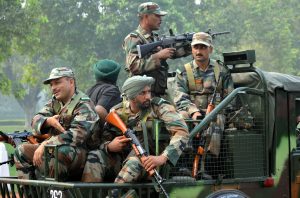The Agnipath scheme was launched by the Indian government in June 2022. Its primary goal was to achieve a leaner and younger army. However, the scheme initially sparked violent protests and, just two years after its introduction, it is again at the receiving end of criticism, with calls for its abolition.
The Indian army is heavy with troops, and a large portion of the defense budget goes to salaries (around 31 percent) and pensions (23 percent), leaving only a small portion for equipment upgrades and technological development.
To address this imbalance, the Agnipath scheme was designed to recruit young people (17.5 to 21 years of age) for four years to undertake rigorous military training, with full absorption of just 25 percent of recruits after the initial four years. The new recruits would be called Agniveers or “Fiery Warriors.”
As the army is one of the largest employers of young people in India, the short-term nature of the job and the lack of guaranteed employment after four years faced criticism. It has also been called out for how it might impact the effectiveness of the army in the long term.
While the opposition promised to scrap the scheme if it came to power, Prime Minister Narendra Modi asserted that India has needed major defense reform for decades and claims the army has said as much.
“Unfortunately, it was not given enough importance earlier. The Agnipath scheme is also an example of the necessary reforms done in the army,” Modi said. “For decades, discussions have been going on in parliament and many committees on making the army young.”
Defense Minister Rajnath Singh has argued, “Sena mein youthfulness honi chahiye. [There should be youthfulness in the army.] The youth, I feel, are more enthusiastic. They are more tech-savvy. We have taken proper care that their future is also secure. We will also make changes if there is a need.”
But with increasing resistance to the scheme, it has been reported that the army is undertaking major changes, including increasing the tenure from four years to eight and increasing the retention of recruits to around 60 to 70 percent.
Another factor pushing for these changes is the gap between the number of army personnel retiring and the intake of Agniveers. Around 60,000 personnel retire every year, while the number of new recruits can only be around 40,000.
Compensation is also driving the resistance. This issue gained media attention after the death of Agniveer Ajay Kumar in January 2024.
While an Agniveer’s family is entitled to a one-time compensation of $196,946, they are not entitled to other benefits that a regular soldier’s family receives after death. Pensions, school fees, and benefits like gratuity (reward for an employee’s dedication and years of service) are all missing from the compensation extended to Agniveers.
Given the short tenure, the question of what the 75 percent of recruits who are not taken on would do is also a pertinent question. Some state governments such as Rajasthan and Arunachal Pradesh have recently announced quotas for ex-Agniveers in state police, jail guards, forest officers, and other security roles. However, a nationwide policy with similar guarantees is still not available.
As of now, it appears that though the government brought in the policy to cut the army’s flab, it will likely hurt morale. Soldiers need to feel they belong if they are to commit to the system, and a guarantee of just four years cannot achieve this.
Improving national defense and border security while also upgrading infrastructure, weapons, and technology is important, and so the budget concerns are a reality. But this is hard to achieve while undermining the people whose job is safeguarding the country. A leaner army with better weapons and technology is crucial, but the cost cannot be an army with weakened morale and a lack of trust in the system.
Originally published under Creative Commons by 360info™.

































